3-2 Zone Defense
3-2 Zone Defense
2021-12-15
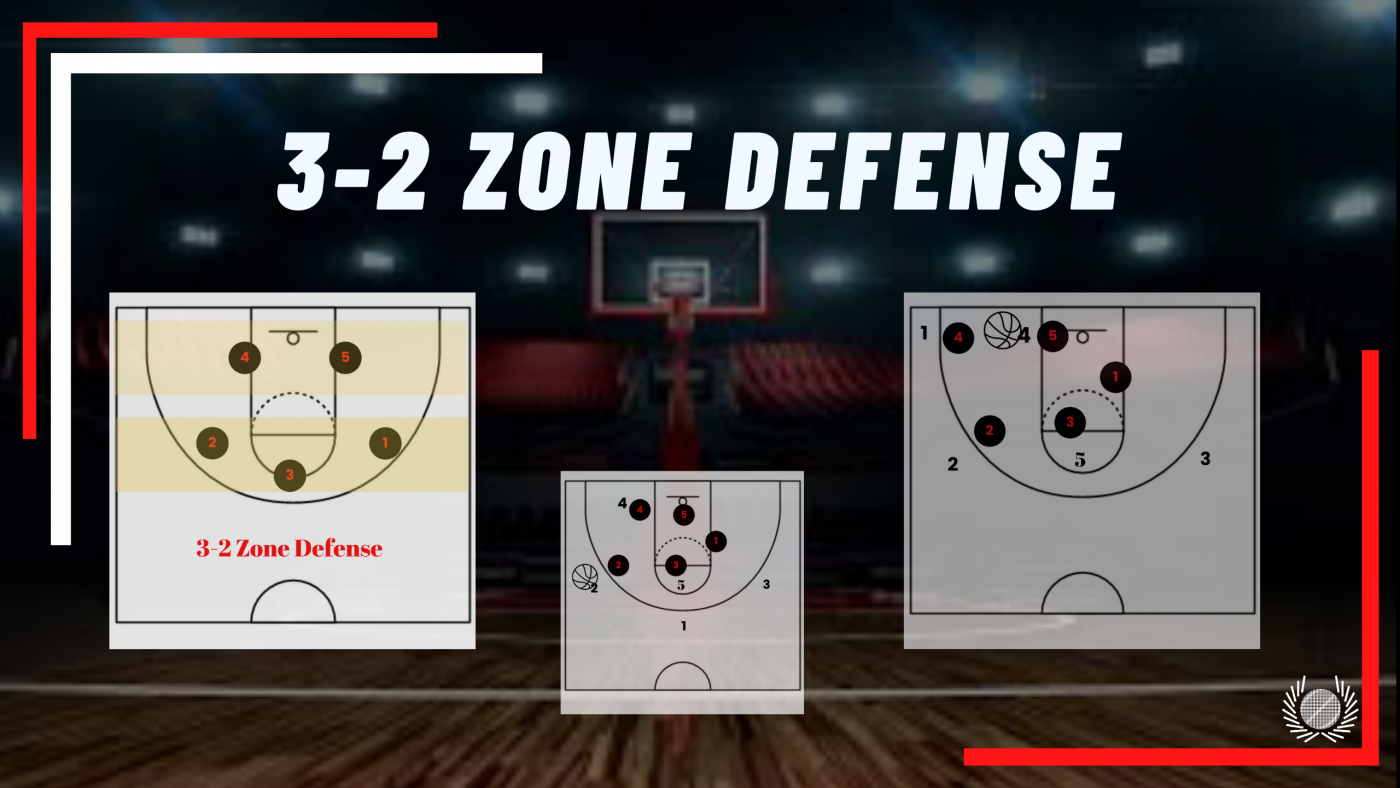
Today we are going to be breaking down a 3-2 zone defense in basketball with you.
There are some important things to note in order to run an effective zone defense and here is where your learn how to properly run a 3 2 zone defense.
First, it’s important to know what a zone is.
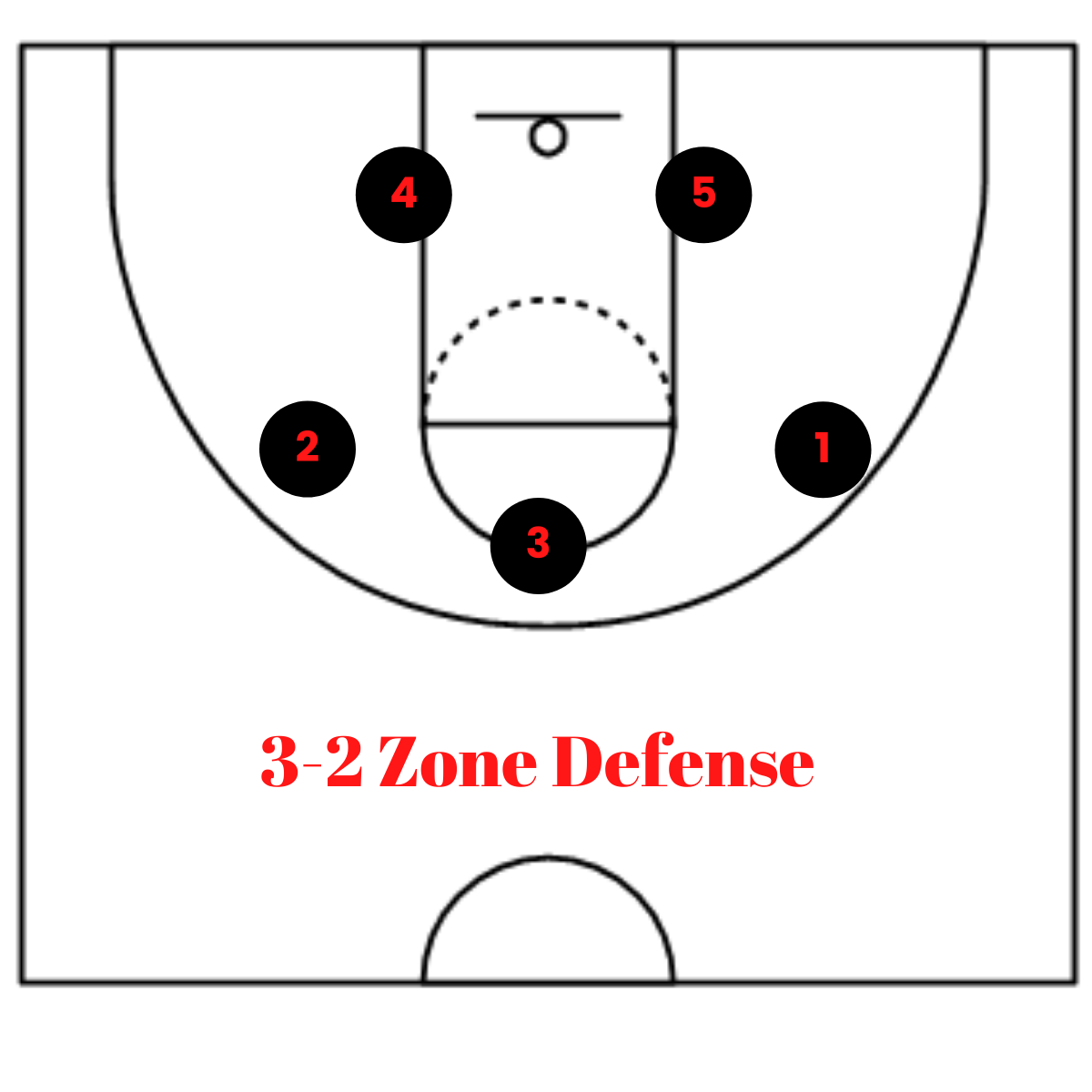
Zone differs from man-to-man defense because instead of guarding a man and playing in help side defense, in zones you just play an area and don’t worry about a single man.
Zones in basketball are effective for many reasons.
They can take the offense out of their flow. It can protect players from being in foul trouble. It can force bad shooting teams to attempt more long distance shots. And in some cases, a zone can apply more pressure and traps that a man couldn’t.
The biggest reason for this article is to introduce a 3 2 zone in basketball, but it´s important to note that because players aren’t guarding a man and rather are guarding an area it´s extremely important to know what area needs to be guarded by who and when it needs to be guarded.
And that is what we will go over with you today…
Basic coverage, 3 players guarding the perimeter and 2 players at the bottom, one on each block
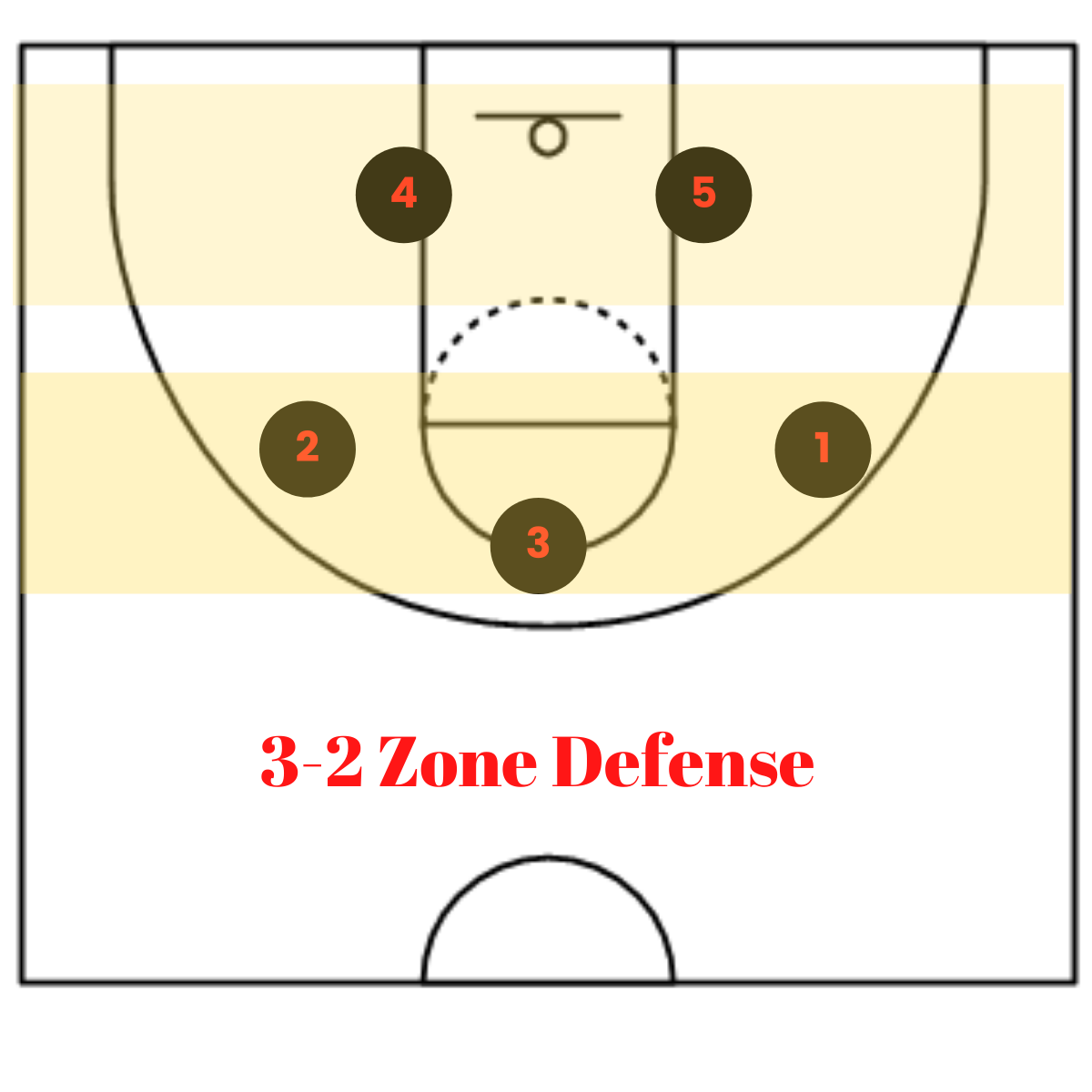
Advantages
- Encourages the offense to play on one side of the court.
- Discourages penetration and post ups.
- Encourages teams to shoot a lot of corner 3’s (if they aren’t good at shooting).
- Keeps defense out of the lane.
- Easy to gang rebound.
- Easy to stay out of foul trouble
Disadvantages
- If the team has great shooters, corner 3’s will be open shots.
- If the defense is able to post up or get into the lane/middle of the floor, it makes it hard to play defense.
- Poor communication will lead to a lot of potential points
Principles of running a 3-2 zone
Typically the 3 players at the top of the zone are your 3 guards (point guard, shooting guard and forward), or your 3 smaller players. Having the 2 bigs be at the bottom allows them to be your primary rebounders.
This is a good defense to run if you’re low on players, or if you are trying to keep your star players out of foul trouble.
It forces teams to take outside shots( not just open shots), discourages teams from trying to penetrate, and it can be highly effective with the right players.
3 2 Zone Defense Keys
Some of the most important keys in a zone take absolutely zero talent or athleticism.
If you want to run an effective zone you need to be a team that is good at communicating, and they need to play with active hands. Your playes need to communicate.
Top Guard
This player is responsible for the ball when it is in the creases, or top of the key.
Ball is on the wings
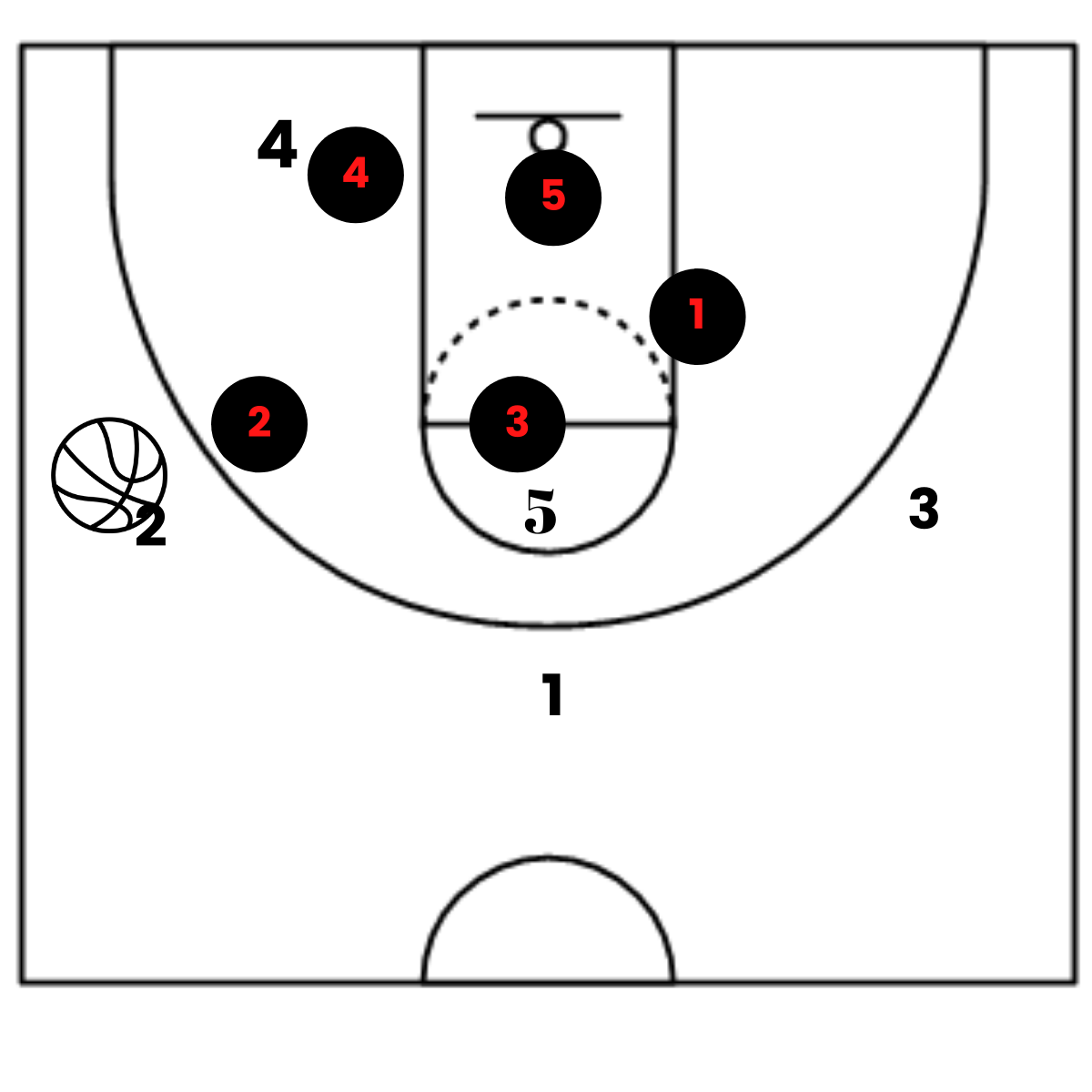
Pass to the wing. This player will protect the middle of the flood. If no one is at the top of the key this player can stand on the nail. If there is a player at the top of the key, this player has to use discretion on how much to help depending on the player´s ability to shoot.
The ball is in the corner
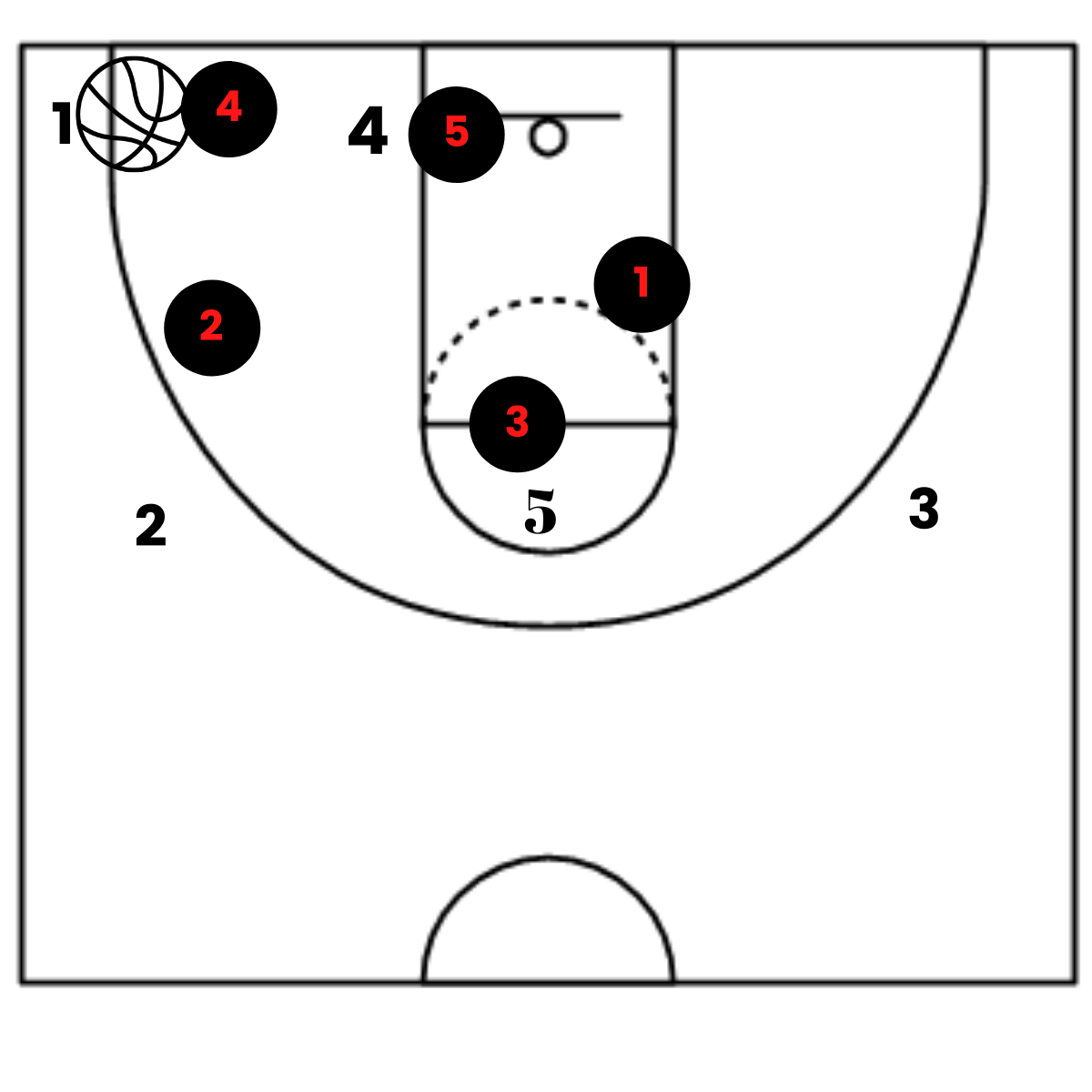
When the ball is in the corner, this player will have to read how the corner and the high post are playing it.
If the wing defender picks the ball up, the top guard has to cover the high post area.
This way they can get to the wing but also cover the middle of the floor as well. If the ball goes to the wing the top guard needs to force the offense to stay on that side of the floor. And stay there until the wing can bump them back to the middle of the floor.
If the post player gets the ball in the corner, this guard still has to cover the same area but they no longer have to worry about the wing because the defensive wing has that responsibility. Therefore they are only worried about the middle of the floor.
Ball is in the post - Defend the low post
.png?1639559767186)
This should be hard to do, but it can happen. If the ball gets into the post, the top guard will cover the nail area. And play like a safety in football.
If your team decides to trap the post (aggressive route), the top guard would then have to go to the ball side wing and deny the closest player to them.
Wings
These players are responsible for guarding the ball when it is on their wing, and depending on the coach could also be responsible for covering the ball when it is in the corner.
In any case, if the ball goes into the corner from anywhere other than ball side wing, the wing defender on that side of the floor should be the first player to the corner, but could be bumped off. (So if the offense skips the ball, or throws it from the top of the key or post).
Defend the High Post
.png?1639559814603)
If the ball is at the top of the key (high post area), this player should be standing a foot off of the elbow. This keeps the zone compact (so that the team can’t penetrate), but also makes an easy close out to the wing.
The ball is in the ball side corner
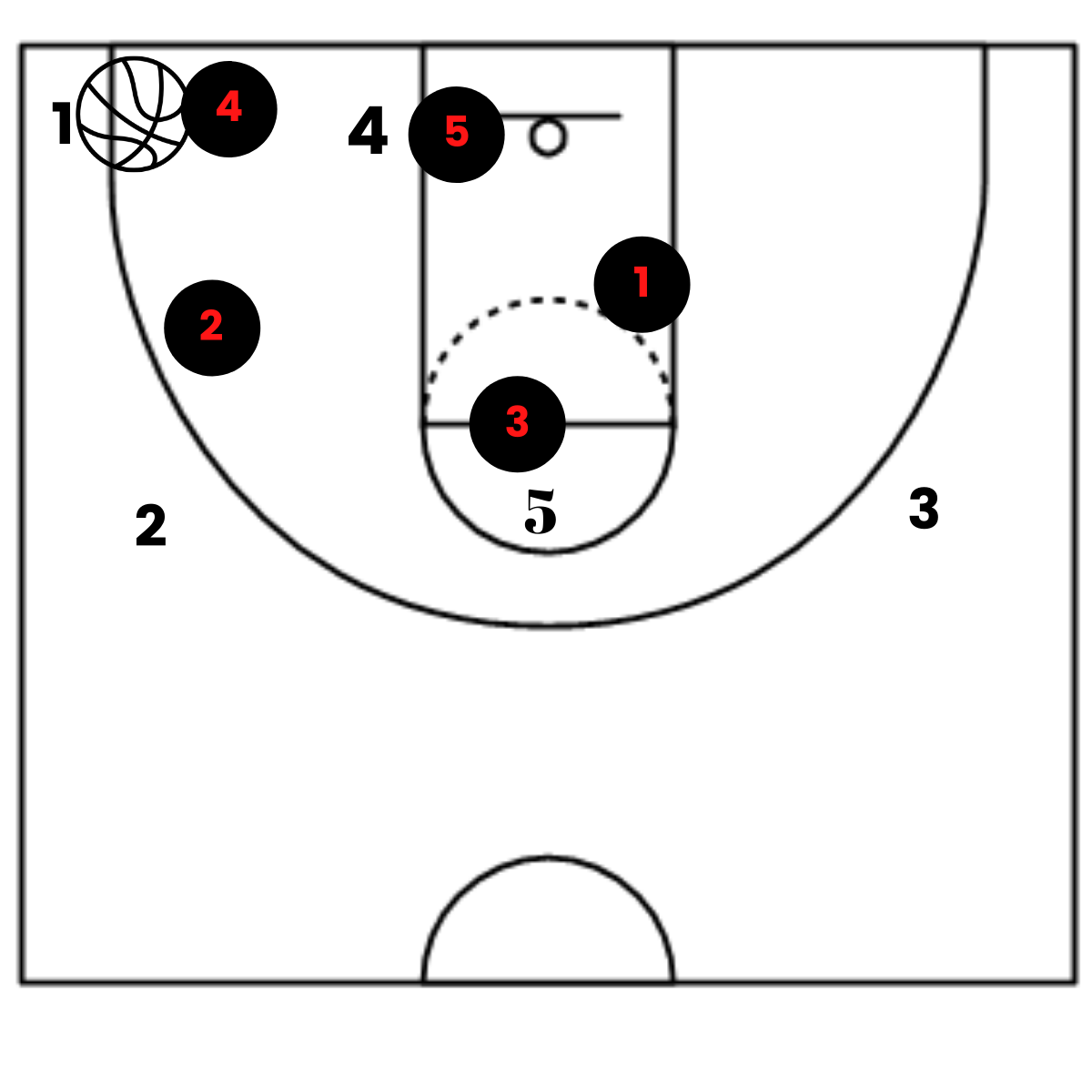
If the ball is skipped, or passed from the top of the key or post, the wing defender is responsible for covering that area but could be bumped back to the wing. If they are bumped off, they should be in a help position on the wing. Playing in a helpside position for the nearest offensive player.
This also means that if the ball is on the wing (so they are guarding the wing), and they pass to the corner a big will be responsible for the initial defense but the wing will have to bump them off. Keeping the offensive player stuck and forced to drive baseline.
Weak side wing
When the ball is on the opposite wing, this player is responsible to play on the opposite elbow. This is the general area that they will guard but they will be like a safety in football. Trying to read the passers eyes and help everyone else in their defensive positioning (they can see the whole floor to help out teammates).
Ball is in the weak side corner
Depending on how the coach wants to play will dictate where the player should be.
If the wing guards the corner, this makes the top guard cover the wing. And this wing will cover the nail area. They will be responsible for any skips. And if the ball somehow gets over the top guard´s head and is at the top of the key (without being stolen), this wing has to cover it.
Trying to force the offense to stay on that side of the court, atleast until they get bumped back to normal position.
If the big covers the corner then the opposite wing will cover the opposite block/mid post area depending on where the offense goes. Still playing like a safety and communicating.
If the team decides to trap the corner, this player will need to make it to the middle of the floor (nail area). Making it hard to get the ball out of the trap. Responsible for the middle (steal this pass), and skips (play normal defense on this pass).
The ball is in the ball side post
.png?1639559915129)
Depending on how the coach wants to cover this, will dictate where to be.
You can either have this player (side post player)cover any player on this side of the floor and play help defense from there. If there are more than one then they need to guard the lower of the two offensive players.
They can also trap the post. Trying to cause a turnover.
If the ball is in the weak side post
If your team isn’t trapping you will be on the opposite elbow or even further away. Protecting from any skips and communicating and playing in a safety role.
If your team is trapping this player is responsible for the middle of the floor (ball side elbow area). No passes should get in this area without being stolen, and if they skip the ball to the other side of the floor you are responsible for closing out and playing defense.
Post Players
This player is mainly responsible for communicating and rebounding. If they are good perimeter defenders it also helps with passes to the corner, but that isn’t their main responsibility.
Ball is in the creases
This player is playing outside of the block. Ready to rotate where needed.
If the ball is on the ball side wing
This player is still going to be in the block area.
If someone is in the corner they should be in help side, slightly off the block.
If the team has no one in the corner but a player in the post, the defensive post player should front them.
If a team tries to overload they player should be in front of the post and ready to help the wing.
The ball is on the weak side wing
This player will be playing underneath the bucket in help side. They can discourage an over the top past to a potential fronted post player. But mainly just in help and ready to rotate.
If the ball is in the corner
The post can either play the person in the corner straight up. They can cover the corner initially and be bumped off by the wing and then they will be bumped to the block again, while the wing player forces them baseline.They will either front a potential post player or just play the area. If they drive the corner while the wing is playing it, trap automatically.
Or you can trap the corner automatically.
If the ball is in the weak side corner
Play under the hoop ready to rotate no matter what. If the wing covers the corner, stay under the hoop ready to rotate. If the big covers the corner, this big will have to cover the block (do not front if there is a post player here). If the ball goes in, trap with both bigs.
If the ball is trapped in the corner, now you have to front anyone in the post area making it difficult to get out of the trap.
Ball shouldn’t be able to get into the ball side block unless an over the top pass occurs.
If this happens the opposite post should already be in the help. You can then either trap, or have the big that the ball went over, rotate to the other block.
WHY TEAMS PLAY 3 2 ZONE DEFENSE
To sum it all up, 3-2 zones are commonly used to defend teams that could be quicker than you and teams that aren’t good shooters. Could also be used to defend really good rebounding teams, or teams with poor passers.
Teams will also often play it if they don’t have a big rotation because it doesn’t take as much energy, and it keeps star players from fouling.
We hope you found this guide helpful.
We will talk again in a couple of days but for now...
#BringYourAgame
